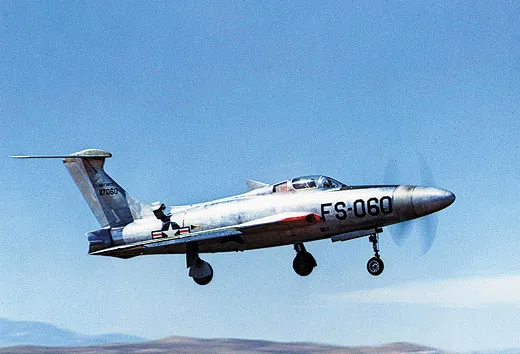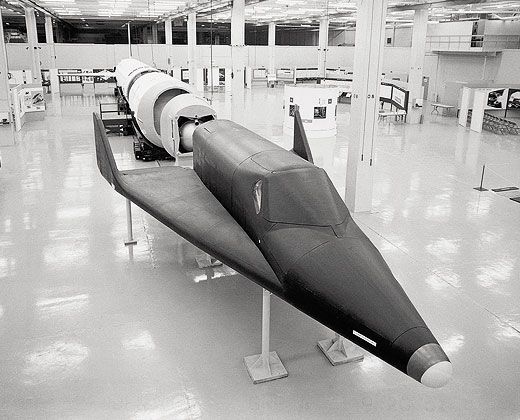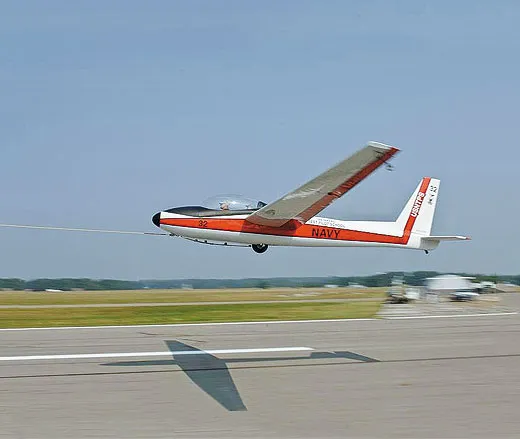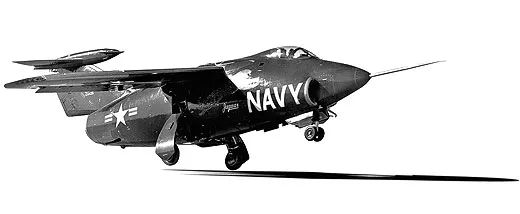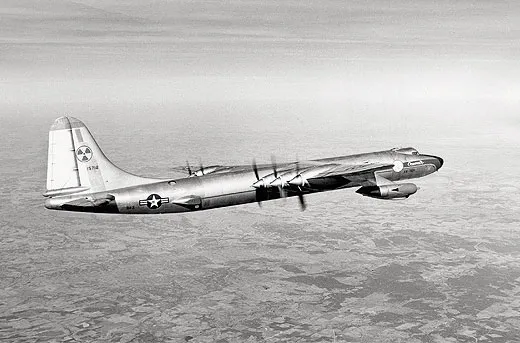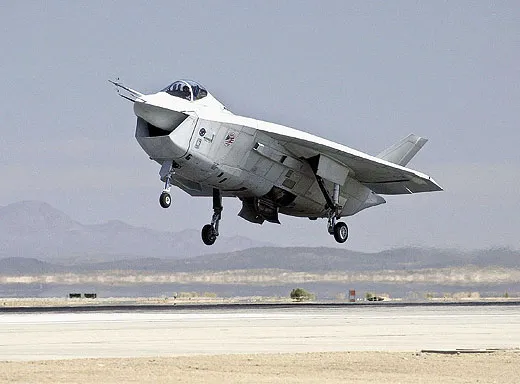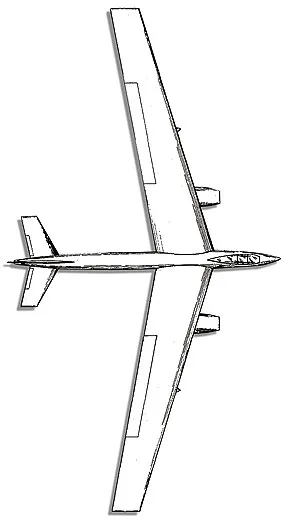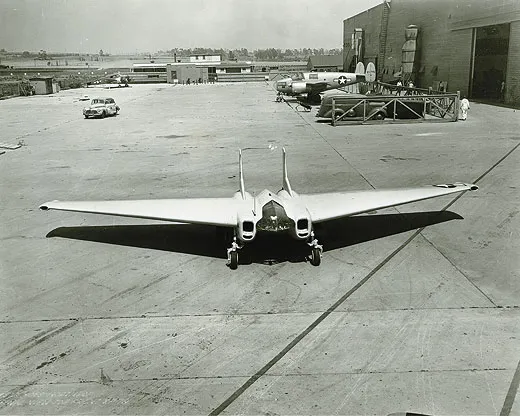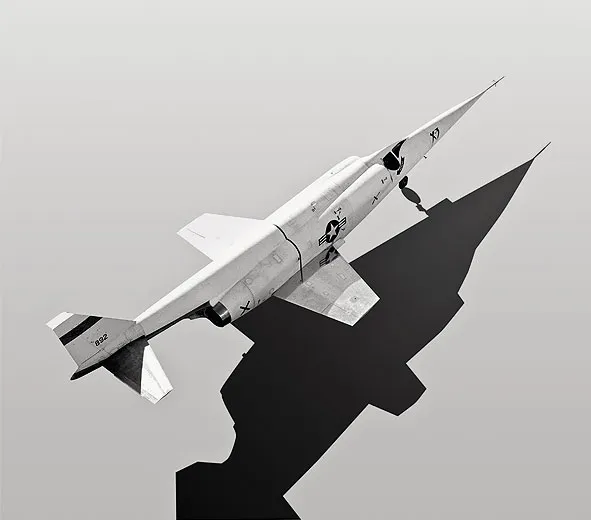Loser X-Planes
Every research aircraft poses a question. Sometimes the answer is “forget it.”
/https://tf-cmsv2-smithsonianmag-media.s3.amazonaws.com/filer/Loser_X-Planes_8_FLASH.jpg)
We asked aerospace researchers, authors, and historians to name the "worst X-planes, with ‘worst’ to be interpreted any way you like: Useless? Dangerous? Ill-conceived? Downright silly?" Our responders are: •Richard P. Hallion, former Air Force historian and author of numerous books and articles on military and research aviation; •Raymond L. Puffer, recently retired from a 33-year career with the Air Force history program, nearly half spent at the Air Force Flight Test Center History Office at Edwards Air Force Base; •Curtis Peebles, author of several books about X-planes and a historian at the History Office of NASA’s Dryden Flight Research Center; •J. Campbell Martin, also at Dryden, who initiates symposia, lectures, and publications about X-planes; •Jay Miller, aviation journalist and the author of dozens of books, including The X-Planes: X-1 to X-45.
1. Douglas X-3
Designed to achieve Mach 2 cruise speeds, the X-3 Stiletto looked fast even when parked on the Edwards ramp. It had the most refined airframe of any X-plane of the nifty fifties. What it didn’t have were the right engines. At best, it could exceed Mach 1 in a dive. The X-3’s elongated fuselage and stubby, razor blade wings made the airplane susceptible to inertial coupling, in which a rolling maneuver causes uncommanded pitching and yawing. Joe Walker, a research pilot with the National Advisory Committee for Aeronautics, experienced the phenomenon when flying the X-3; the forces came perilously close to overstressing the aircraft’s structure. Ironically, the data produced on inertial coupling was the X-3’s most valuable contribution. Had the intended engines been available, the aircraft would have performed better, but likely people would have been killed.
—Curtis Peebles
An elegant design with the potential for Mach 2-plus flight, it was penalized when the engines intended for it—Westinghouse J46s—grew so big they could not fit within it. Instead, lower-rated J34s were used, dooming the aircraft to transonic performance.
—Richard P. Hallion
2. Republic XF-84H
The Worst X-Plane to Be Around was a turboprop-powered experimental version of the swept-wing F-84. Early jet engines were extremely slow to spool up, which made carrier landings, with the need to go to full power at touchdown, even more hazardous. As a result, the Navy became interested in the use of turboprop engines, which would alleviate the slow-ness. Even at idle throttle, the XF-84H’s three-blade prop rotated so fast that the tips were supersonic, which generated severe noise and vibration. This (1) caused the ground crew to experience crippling nausea, and (2) earned the aircraft the nickname Thunderscreech (see "ZWRRWWWBRZZ!," June/July 2003).
—Curtis Peebles
The XF-84H made history—on the ground—by gaining the reputation among crew chiefs as Aviation’s Most Acoustically Abusive Vehicle. Over the years, the stories have been embellished: According to one, it was loud enough to turn the Rogers lakebed into tapioca pudding (false). XF-84H serial number 17059 spent years mounted on a pole outside the Meadows Field airport terminal at Bakersfield, California, where an electric motor turned the propeller ever so slowly. A life-size Santa was placed in the cockpit to greet seasonal holiday travelers. The airplane is now on more dignified indoor display in the National Museum of the U. S. Air Force at Wright-Patterson Air Force Base near Dayton, Ohio.
—J. Campbell Martin
3. Boeing X-20
The Worst Lost Opportunity, the Dyna-Soar was a manned, winged spacecraft, the culmination of the rocketplane projects from the X-1 through the X-15. It would have been launched into orbit on a Titan III, then would have reentered the atmosphere and landed like an airplane. The delta-wing airframe, with fins at the wingtips, was built of high-temperature metals rather than employing an ablative heat shield like that on the Mercury capsules. Plagued by a cutesy nickname, the X-20 vacillated between being an experimental vehicle and an operational space reconnaissance and bombardment system. Secretary of Defense Robert McNamara cancelled it in December 1963.
—Curtis Peebles
4. Schweizer X-26A
The Airplane That Least Deserves an "X" Designation, hands-down. The X-26A is a very-well-behaved, off-the-shelf production sailplane. Yes, the Navy Test Pilot School had a couple of beautiful examples, and X-26s are extraordinarily useful for demonstrating what rudder pedals do in aircraft made before the development of fly-by-wire technology. But everywhere else, the model is known as a Schweizer 2-32. They are workhorses, used to give paying customers sightseeing rides. Oh, and they have been soloed by 14-year-olds building time toward their 16th birthday, when they can take the private pilot check ride that the Federal Aviation Administration requires for their licenses. Not exactly what comes to mind when someone says "experimental aircraft."
—J. Campbell Martin
5. Grumman XF10F Jaguar
Somewhere between the worthy F9F Panther and the hotrod F11F Tiger, Leroy Grumman’s team veered far off the rails with an airborne monstrosity, the XF10F Jaguar. A dozen futuristic innovations were packed into—and sticking out of—a typical portly Grumman fuselage, any one of which would have led to a long and exciting flight test program. Probably its major undoing was its (supposedly) aerodynamically balanced horizontal stabilizer. A small canard surface on the tip of a heavy tail boom was intended to move the entire delta surface, much like a movable trim tab. This feature was loathed by Grumman test pilot Corky Meyer, who had other complaints as well. One wobbly test flight concluded with a high-speed landing on a dry lakebed after a canopy shattered spontaneously at 21,000 feet and 602 mph. In the course of these interesting events (the Jaguar was chock-full of surprises), Meyer’s ejection seat somehow was armed and Meyer finally rolled to a stop, outside his cockpit, clinging to the nose of the airplane—a singular occurrence in the history of Edwards.
—Raymond L. Puffer
6. Convair X-6
This was a proposal to fuel a Convair B-36’s four jet engines with a nuclear reactor, eliminating the need for conventional fuel and providing nearly unlimited range. A reactor would require radioactive materials, which required the airplane to be lined with lead, which would make the airplane so heavy it would crash and contaminate the landscape. Beyond these technical and safety problems, the concept of a nuclear-powered airplane was rendered obsolete by mid-air refueling, which allowed bombers to fly long alert missions. The development of ballistic-missile submarines also provided a long-duration nuclear deterrent that was nearly impossible to detect and destroy in a first strike. To gather data on radiation exposure, engineers put a small nuclear reactor in a B-36 and started the reactor when the bomber was airborne (the reactor was not meant to provide power on this flight). The NB-36H flew out of Carswell Air Force Base in Texas between 1955 and 1957 without mishap. Due to the lead lining, the crew compartment weighed about 11 tons.
—Curtis Peebles
Including the Convair X-6 in your list is a travesty of historical justice. The X-6 was a well-thought-out project with extraordinary potential. It most certainly would have been successful, and rumors about it spewing radioactive material wherever it went are simply b.s. I have had access to much of the research data that went into the studies leading up to the X-6, and it appeared viable from every perspective. The successes realized by the NB-36H nuclear test bed’s nearly 50 missions underscore this point, as do the successes realized by the actual nuclear test bed engines run at Yucca Flat proving grounds. Politics—and politics alone—are what killed the X-6.
—Jay Miller
7. Boeing X-32
The X-32 and X-35, the Most Exploitatively Named X-Planes, were concept demonstrators in a fierce flyoff to be renamed F for "fighter," as in Joint Strike Fighter. If precedent had been followed, they would have been named the YF-32 and YF-35, like the prototypes YF-16 and YF-17 of the Lightweight Fighter flyoff of the 1970s. But "Battle of the X-Planes" had such a great marketing ring to it. Flying an airplane and buying an airplane are two widely disparate activities. Bob Cunningham of General Dynamics’ pre-design group constantly preached to young engineers the Doctrine of Beauty: If the customer doesn’t like the looks of the thing, regardless of performance, he doesn’t buy. "And if he doesn’t buy at this point," Cunningham said, "it dies; it never makes it into hardware. In short, you can sell a beautiful design a lot easier than an ugly one." Cunningham’s team fielded the winning YF-16.
—J. Campbell Martin
8. Rockwell X-30
The National Aerospace Plane, the Worst Case of Technological Optimism, was an attempt to build a single-stage-to-orbit vehicle powered by a supersonic combustion ramjet. By the early 1980s, scramjet technology, some researchers argued, was ready to power an aircraft. The optimism proved not to be justified. The aircraft’s size, weight, and cost increased, while performance decreased. At the end, the X-30 had a 3,000-feet-per-second velocity deficit that would prevent it from reaching orbit. It was officially cancelled in January 1995, when Air Force participation ceased.
—Curtis Peebles
9. Bell X-16
The X-16 was not an experimental or research aircraft. The "X" designation was cover for its real mission: a high-altitude reconnaissance aircraft sponsored by the Air Force. The X-16 had long, swept wings, two jet engines slung under the wings, a bicycle landing gear with outrigger wheels under the wings, and a large payload of cameras and other reconnaissance equipment in the fuselage. Kelly Johnson of Lockheed’s Skunk Works, always ahead of his time, realized an unconventional design was required. This became the U-2, which is still used. The X-16 was cancelled before it ever flew.
—Curtis Peebles
10. Northrop XP-79B
Another example of Jack Northrop’s lifelong fascination with flying wings. This was his only attempt at a nearly tailless fighter, and, as usual with Northrop, it was innovative in a number of other ways as well. Jet powered and made largely of magnesium, its unusual configuration led to the widespread myth that it was designed as a "flying ram," blithely lopping off the wings and tails of enemy aircraft with its lethal reinforced wing. This was clearly false; Northrop intended the airplane to be fitted with an armament pack. Besides, any attempt to slice off pieces of an enemy would immediately throw the fighter into a Frisbee-like spin. The XP-79B had that tendency anyway, and promptly demonstrated it some 15 minutes into its first and only flight, spinning in and killing test pilot Harry Crosby. The little airplane’s entire flying career thus consisted of one takeoff and one fatal crash.
—Raymond L. Puffer
